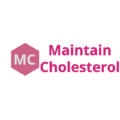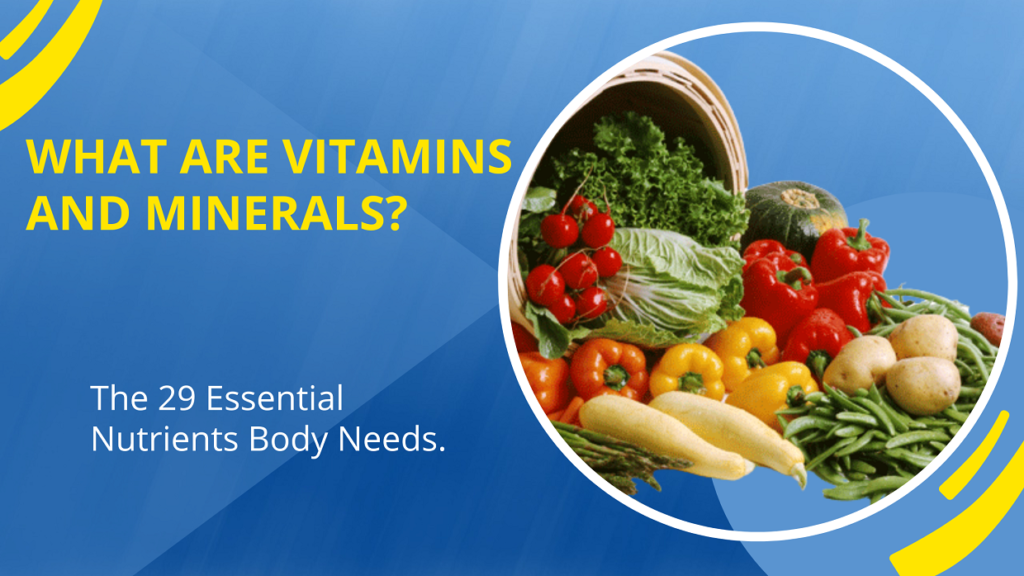Table of Contents
Introduction
Vitamins and minerals are essential nutrients (micronutrients) that our bodies need to function properly. They are not produced by the body and must be obtained from food. There are 13 essential vitamins and 16 essential minerals.
This blog article provides an overview of vitamins and minerals, including their functions, sources, and deficiency symptoms. It also discusses the importance of a balanced diet and the potential benefits of taking vitamin and mineral supplements.
Vitamins and minerals are very essential for energy generation form glucose and fatty acids.
What are vitamins and minerals?
Our food contains mainly carbohydrates, fats and proteins. We require these three types of food in large quantity. Therefore, they are classified as macronutrients. They mainly serve the purpose of providing energy. Amino acids can also provide energy but mainly they are the building blocks of the body like muscles, tissues, bones, etc.
Our food also contains certain other ingredients which are present in small quantities. They are required in small quantities for perform important function in the body. Therefore, we call them micronutrients.
Micronutrients are also called as vitamins and minerals. They are involved in a wide range of bodily processes, including growth and development, metabolism, and immune function.
Read the articles on this website like “Does niacin lower cholesterol levels?” and “Reduce Lipoprotein(a) with Niacin ER” wherein the vitamin niacin shows beneficial effects.
26 essential nutrients (vitamins and minerals) for good health
There are 13 essential vitamins and 16 essential minerals that help your your body to function properly. Each cell in your body needs them, even though their requirement is low.
Glucose is the source of energy, the fuel part and vitamins and minerals are the metabolize’rs or supporters that help glucose to burn and convert into energy.
Vitamins are divided into two groups:
- fat-soluble vitamins (A, D, E, and K) and
- water-soluble vitamins (C and B vitamins).
Minerals are classified as either:
- Major minerals (calcium, phosphorus, magnesium, potassium, sodium, chloride, and sulfur) or
- Trace minerals (iron, zinc, iodine, copper, manganese, fluoride, selenium, chromium, and molybdenum).
What is the source of vitamins and minerals?
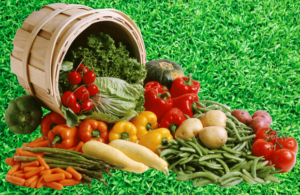
The body does not produce vitamins and minerals on its own, so they must be obtained from food. A healthy, balanced diet that includes a variety of fruits, vegetables, and whole grains can provide most of the vitamins and minerals you need.
Vegetables are a rich source of minerals. Hence vegetables must be consumed daily in large quantities to get sufficient minerals.
Milk is a good source of calcium, and vitamins D and E.
Your body makes vitamin D when your bare skin is exposed to the sun. Most people get at least some vitamin D this way. However, clouds, smog, old age, and dark-colored skin reduce the amount of vitamin D your skin makes. Also, your skin does not make vitamin D from sunlight through a window. Direct exposure is required.
B complex vitamins are mostly available from proteins of animal origin, milk, milk products, and in some whole grains. Polishing the grains removed most of these important vitamins and minerals.
Which vitamins do animals make endogenously but humans do not?
There are several vitamins that animals make endogenously (within the body) that humans do not.
These include:
- Vitamin C: Most animals can synthesize vitamin C from glucose, but humans lost this ability about 61 million years ago. As a result, humans must get vitamin C from their diet.
Read this article why animals don’t get heart attack as it will enlighten you on the cause of heart disease as well cause of chronic diseases.
- Carotene: Carotene is a precursor to vitamin A that is found in many fruits and vegetables. Humans can convert carotene into vitamin A, but the process is inefficient and not enough vitamin A is produced to meet the body’s needs. As a result, humans must get vitamin A from their diet.

What are vitamins?

Vitamins are organic compounds that are essential for the normal growth and functioning of the body. They are not produced by the body and must be obtained from food.
There are 13 essential vitamins: fat soluble and water soluble.
Fat-soluble vitamins: These vitamins are stored in the body’s fat tissues and can be toxic in high doses. They include vitamins A, D, E, and K.
Vitamins play a variety of roles in the body, including:
- Energy metabolism: Vitamins are involved in the production of energy from food.
- Cell growth and repair: Vitamins are essential for the growth and repair of cells throughout the body.
- Immune function: Vitamins help the body fight off infection.
- Vision: Vitamin A is essential for vision.
- Blood clotting: Vitamin K is essential for blood clotting.
- Bone health: Vitamin D is essential for bone health.
- Protection against free radicle damage:
A deficiency in any vitamin can lead to health problems. For example, a deficiency in vitamin C can lead to scurvy, a deficiency in vitamin D can lead to rickets, and a deficiency in vitamin K can lead to bleeding problems.
What are minerals?
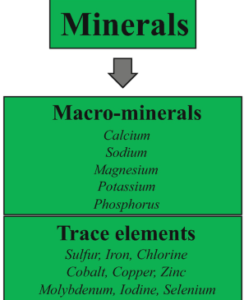
Minerals are naturally occurring elements that are essential for human health. They are found in the earth’s crust and in our bodies. There are two types of minerals: macrominerals and trace minerals.
- Macrominerals: Macrominerals are needed in larger amounts by the body. They include calcium, phosphorus, magnesium, sodium, potassium, chloride, and sulfur.
- Trace minerals: Trace minerals are needed in smaller amounts by the body. They include iron, zinc, iodine, copper, fluoride, molybdenum, manganese, chromium, and selenium.
Trace minerals are also known as microminerals or mineral elements. They are essential for human health, but only in small amounts.
Trace minerals are involved in a variety of bodily functions, including:
- Energy metabolism: Trace minerals are involved in the production of energy from food.
- Cell growth and repair: Trace minerals are essential for the growth and repair of cells throughout the body.
- Immune function: Trace minerals help the body fight off infection.
- Vision: Trace minerals are essential for vision.
- Blood clotting: Trace minerals are essential for blood clotting.
- Bone health: Trace minerals are essential for bone health.
A deficiency in any trace mineral can lead to health problems. For example, a deficiency in iron can lead to anemia, a deficiency in zinc can lead to impaired growth and development, and a deficiency in iodine can lead to goiter.
The best way to get enough trace minerals is to eat a balanced diet that includes a variety of foods.
Some good sources of trace minerals include:
- Iron: Meat, poultry, fish, eggs, beans, and leafy green vegetables.
- Zinc: Meat, poultry, seafood, beans, and nuts.
- Iodine: Iodized salt, seafood, and seaweed.
- Copper: Meat, poultry, seafood, beans, and nuts.
- Fluoride: Fluoridated water, tea, and some fish.
- Molybdenum: Whole grains, legumes, and organ meats.
- Manganese: Whole grains, nuts, and leafy green vegetables.
- Selenium: Seafood, meat, poultry, and Brazil nuts.
Which diets recommend vitamin and mineral rich diets?
In order to reverse heart disease, diabetes, cancer and other chronic diseases through dietary measures the Dean Ornish diet eating a DASH diet or a diet with plenty of fruits and vegetables. Read this article “Does Dean Ornish Diet Reverse Heart Disease” to get all the information on DASH diet.
List of vitamins water soluble and fat soluble
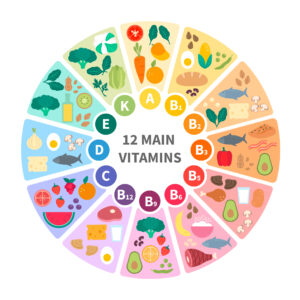
The 9 water soluble vitamins:
Vitamin B1: (Thiamine) helps the body convert food into energy. It is also important for healthy nerve function, muscle growth, and a healthy appetite. Good sources of thiamine include whole grains, beans, nuts, and seeds.
Vitamin B2 (Riboflavin): is important for energy production, cell growth, and healthy skin and hair. Good sources of riboflavin include milk, yogurt, cheese, eggs, leafy green vegetables, and almonds.
Vitamin B3 (Niacin): is important for energy production, brain function, and healthy skin. Good sources of niacin include lean meats, poultry, fish, whole grains, and fortified cereals.
Vitamin B5 (Pantothenic Acid): is important for energy production, the production of red blood cells, and the metabolism of carbohydrates, proteins, and fats. Good sources of pantothenic acid include meat, poultry, fish, whole grains, and beans.
Vitamin B6 (Pyridoxine): is important for energy production, brain function, and the production of red blood cells. Good sources of pyridoxine include meat, poultry, fish, whole grains, and bananas.
Vitamin B7 (Biotin): is important for energy production, the metabolism of carbohydrates, proteins, and fats, and healthy hair, skin, and nails. Good sources of biotin include liver, eggs, sweet potatoes, and nuts.
Vitamin B9 (Folate): is important for cell growth and division, the production of red blood cells, and the prevention of birth defects. Good sources of folate include dark green leafy vegetables, citrus fruits, beans, and lentils.
Vitamin B12 (Cobalamin): is important for energy production, brain function, and the production of red blood cells. Good sources of vitamin B12 include meat, poultry, fish, eggs, and dairy products.
Vitamin C: is an antioxidant that helps protect cells from damage. It is also important for wound healing, the absorption of iron, and the production of collagen. Good sources of vitamin C include citrus fruits, berries, tomatoes, broccoli, and potatoes.
The 4 fat soluble vitamins
Vitamin A: is essential for vision, healthy skin and mucous membranes, bone and tooth growth, immune system health. Good sources of vitamin A include carrots, sweet potatoes, spinach, kale, cantaloupe, and winter squash.
Vitamin D: is important for the absorption of calcium and phosphorus, which are essential for bone health. Good sources of vitamin D include sunlight, fatty fish, and fortified milk and orange juice.
Vitamin E: is an antioxidant that helps protect cells from damage. It is also important for healthy skin and the prevention of blood clots. Good sources of vitamin E include vegetable oils, nuts, and seeds.
Vitamin K: is important for blood clotting. Good sources of vitamin K include leafy green vegetables, broccoli, and liver.
The 16 minerals (minerals and trace minerals)
Macrominerals:
Macrominerals are needed in larger amounts by the body. They include:
calcium, phosphorus, magnesium, sodium, potassium, chloride, and sulfur.
Trace minerals:
Trace minerals are needed in smaller amounts by the body. They include:
iron, zinc, iodine, copper, fluoride, molybdenum, manganese, chromium, and selenium.
It is important to note that the recommended daily intake of vitamins varies depending on age, sex, and overall health. It is always best to talk to your doctor about whether you are getting enough vitamins from your diet or if you need to take a supplement.
The importance of vitamins and minerals
We are always told to make lifestyle changes in order to reduce the risk of diabetes, heart disease, high cholesterol etc. One of the recommendations is eat more fruits and vegetables as eating plenty of fruits and veggies may help reduce the risk of many diseases, including heart disease, high blood pressure, and some cancers.
This is a very true statement. This is what actually helps us to reduce the risk of diseases compared to statements like eat less saturated fats, avoid high glycemic foods and so on.
Carbohydrates and fats are source of energy:
Carbohydrates and fats are just the source of energy just like gasoline or petrol is the source of energy for the car.
What does petrol need to burn? Oxygen and a spark to start the ignition or burning and produce carbon dioxide and energy. The energy is then used by different systems in the car to perform its desired function i.e movement from one place to another.
The only purpose of petrol is to produce energy and supply the energy to the car. Besides this it has no role. The function of the car depends upon the functions of several other individual systems in the car.
Vitamins and minerals are the metabolizers:
A similar analogy exists with our human body. Our body contains 37 trillion cells, which are grouped into several tissues, organs, and systems which perform their desired functions. For the functioning and survival of all the 70 trillion cells our body continuously needs energy in the form of ATP. Is the energy currency of the cell
From where does the body get this energy called ATP? Obviously from the metabolism of carbohydrates and fats. They are the basic fuel providers to the body. In case of emergency or if required amino acids produced by the digestion of proteins can also be used to produce energy.
Vitamins and minerals are necessary nutrients for the metabolism of fats and carbohydrates. Without their help and the help of enzymes, these fuels cannot be converted into energy in the form of ATP.
Therefor you should know the different components foods. Apart from carbs, fats and proteins, there are other ingredients that are vital for for health. Check this article for Various components of food.
Our medical community does not give much importance to micronutrients thinking that these vitamins and minerals are required in very small quantities and that getting enough of them is not a problem
In reality, not getting enough of these micronutrients is the main cause of disease that we suffer from. They can be termed as “Nutrient Deficiency Diseases”. Though vitamin C is required in small quantities, it has thousands of functions to perform. We do not get enough of vitamin C from the diet. Most of the vitamin C is consumed in neutralizing free radicals produced during metabolism and by environmental threats. Read more about this in my next article.
